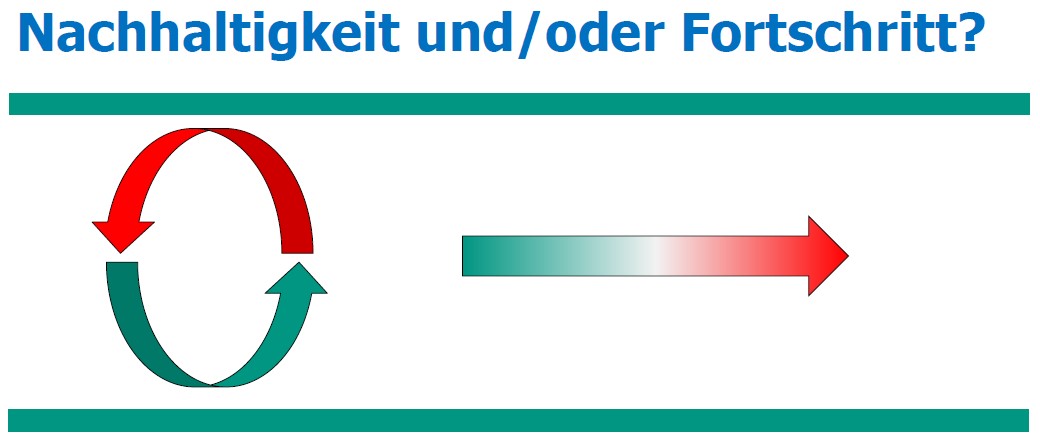Welcome in the Nick-Lab
 |
Molecular Cell Biology (Prof. Dr. Peter Nick)Fritz-Haber-Weg, Gbd. 30.43 (Biology Tower), 5. floor. e-mail. How to find us Living is Searching (Springer-Nature 2023) Secretary
|
the journal with the longest tradition in cell biology (Springer-Nature). We publish it. more...
|
 |
Joseph Gottlieb Kölreuter Award for Paula VenzkeSince 2021, the association Friends of the Botanic Garden at the KIT, announces the Joseph Gottlieb Kölreuter Award for Sustainability. It is dedicated for theses in the field of plant sciences that contribute to sustainability in agriculture, or nature and environmental conservation. This year it was Paula Venzke, who did her master thesis with us an with our partners at the IBMP in Strasbourg. Topic was climate change in viticulture. How can we cope the challenge of progressively hot summers by breeding novel KliWi varieties (for Klima-Widerstandsfähig, climate resilient)? How can we determine the climate resilience of current varieties on a scientific base? Paula Venzke conducted controlled heat-stress experiments at the JKIP Experimental Station and developed non-invasive techniques to monitor the physiological responses of grapevine. She could demonstrate that the popular variety Riesling has to buffer heat stress by opening its stomata, thus, losing a lot of water. In contrast, the wild grapevine Hördt 29 originating from the alluvial forests of the Old Rhine can tolerate higher leaf temperatures, such that it can economise the use of water. This work led to new insights and new methods to evaluate heat tolerance on a scientific base, also an important contribution for our Interreg Upper Rhine projekt Kliwiresse. Congratulations! |
|
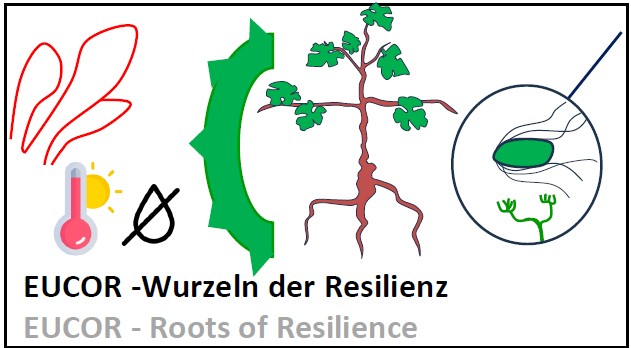 |
EUCOR Project Roots of ResilienceEUCOR, the trinational assocation of Upper-Rhine universities (Karlsruhe, Strasbourg, Freiburg, Colmar-Mulhouse, Basel) launched a call for so-called Seed Money projects. Here, partner KIT-JKIP (Islam Khattab, Peter Nick) together with the University of Basel (Pascale Flury) and the Université Haute-Alsace (Julie Chong) was successful with the project Roots of Resilience. The project tries to render grapevine more resilient against climate-change born novel fungal diseases ("Esca & Co") through improved microbial communities in the rhizosphere. The project is based on results of Kliwiresse, but also previous Upper Rhine Interreg projects, especially Vitifutur and DialogProTec. However, the central reason for the success of the proposal was the cooperation cultivated over four Interreg Upper Rhine networks. The Seed Project in turn will feed into the planned sequel project Robin Root. Planned start is February 2025, running time is two years. more... |
|
 |
EvoDevo of Speciation"Species" are a central concept of biology and usually understood as unit of propagation. This species concept works neatly for animals, because mating of individuals from different species usually do not work or lead to sterile progeny (a classic example would be the mule). Plants, however, do not choose their mating partner themselves, but use insects for doing so. Moreover, plants can circumvent problems with sexuality by asexual propagation. What does "species" now mean for plants? Dr. Sascha Wetters proposed here a new concept, whereby genes that control shape or geometry of flowers are drivers of speciation. To test this idea, he cracked a hard nut - the genus Sage, with more than 1000 known species, one of the most diverse genera at all. Here, he can show that a duplication of the gene switch GLOBOSA facilitated the colonisation of the New World by larger and less asymmetric flowers that recruited novel pollinators, hummingbirds, leading to the birth of numerous new species. This allows to bridge developmental biology and evolution. This work has now been published. 217. Wetters S, Nick P (2025) B-class gene GLOBOSA – a facilitator for enriched species diversity of Salvia in the New World? Plant Biol, 10.1111/plb.70002 - pdf |
|
|
|
The new "Strasburger"127 years ago Eduard Strasburger founded the textbook of botany, which appeared now in the 38. edition - this makes the "Strasburger" the biology textbook with the longest history. Peter Nick contributed a couple of 100 pages to the topics structure and function of the plant body and plant development. The "Strasburger" pursues the goal to depict the entire knowledge on plants, comprehensively, up-to-date, and at the same time filtered. Even though it had never been easier to acquire information, the problem is progressively to filter relevant from irrelevant. Textbooks are, therefore, not outdated, but more important than ever. more... |
FKIThe State Teaching Award 2015 was given to Peter Nick and Mathias Gutmann. The money was used to found the Forum. Beyond faculties and disciplines, we debate here on controversial topics. In WS 2024-2025 we look at sustainability. more...
|
|
|
Genome of plant dolphins decipheredWhen plants conquered terrestrial habitats around half a billion years aog, they had to face a hostile environment. Their success paved the way for other terrestrial life forms. Genetic changes increased the resilience of those plants. Exactly those genes are needed now to adjust our agriculture to cope with the consequences of climate change. Half a billion years are a very long time, though and it is very difficult to discriminate changes due to the new lifestyle from those that occurred due to other reasons during that very long period. Nature comes to our help with a curious phenomenon - as some mammals returned to aquatic life, also some flowering plants returned to an amphibic lifestyle. For this purpose they are able to produce different leaves that not only differ in shape, but also with respect to physiology. The Water Wisteria, Hygrophila difformis, is one of these plant dolphins and is currently investigated in the team of Dr. Jathish Ponnu from our department, who develops this plant into a new model for plant stress. Now, together with Chinese partners, he reached a key point: the genome of this species has been deciphered and the genes that are turned on our off during the transition between air and water could be identified.
Publication Li G, Zhao X, Yang J, Hu S, Ponnu J, Kimura S, Hwang I, Torii KU, Hou H. Water wisteria genome reveals environmental adaptation and heterophylly regulation in amphibious plants. Plant Cell Environ. 2024 Jul 30. doi: 10.1111/pce.15050. |
|
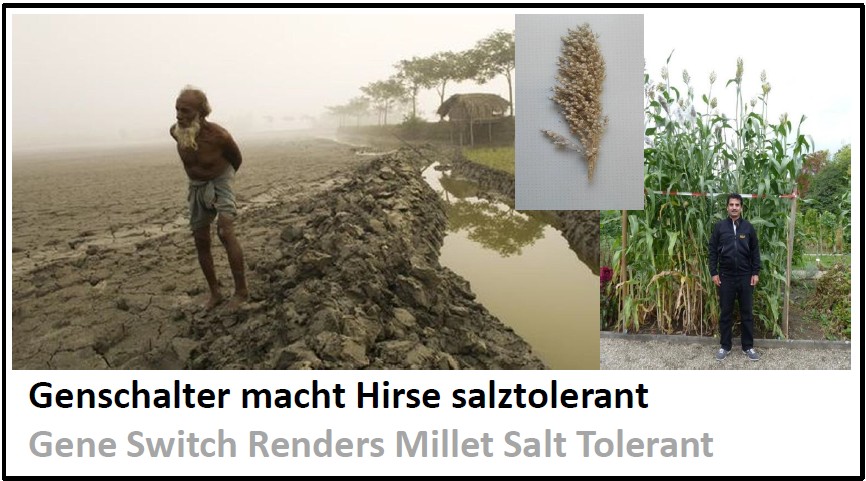 |
Salt Tolerant Sorghum MilletClimate changes makes sea levels rise making fertile coastal land salty. The Nile delta, Bangladesh, Vietnam, but also the South of Italy are already today confronted with salt stress. Can we find crop plants that are able to thrive on such soils? In the past, we have, initiated by our Syrian colleague Dr. Adnan Kanbar, focused on stress resilience in Sorghum Millet. This ancient crop originates from Sudan and can cope with harsh conditions. In fact, we were able to show that some Sorghum varieties not only can grow under salinity, but accumulate more sugar when confronted with salinity. What happens to this sugar, differs - some Sorghum varieties store it in the shoot, what is interesting for bio-economic use (for instance for the production of bio-ethanol) others store it in their seeds, what supports food security in regions affected by soil salinity. During her PhD our colleague Eman Abuslima from Egypt was able to uncover the reason for the different sugar use: a gene switch for the sugar transporter SWEET13 decides. A very active version of this switch could be identified in the old Syrian landrace Razinieh. By breeding, this switch can now be crossed into other millet varieties, and by means of the molecular knowledge, the promising individuals in the progeny can be recognised already in the seedling stage by a simple PCR. Publication 216. Abuslima E, Kanbar A, Ismail A, Raorane ML, Eiche E, El-Sharkawy I, Junker BH, Riemann M, Nick P (2025) Salt stress-induced remodeling of sugar transport: a role for promoter alleles of SWEET13. Nature Sci Rep 15, 7580 - pdf |
|
 |
Tumour Compound from a Mali Desert TreeThe use of plants for healing accompanied humans from their very beginnings. Among the almost half a million of species that have already been described, there are many that produce unique compounds. Especially in developing countries many people depend on plants for healing, because they cannot afford the expensive Western style medication. The tree Detarium microcarpum growing in Mali is used in traditional medicine also against breast cancer. Many anti-tumour compounds target the microtubules, which blocks the proliferation of cancer cells. We, therefore, investigated, whether this is the case for this medicinal plant from Mali. Using tobacco cells, where microtubules were labelled by a fluorescent protein, and could demonstrate that, indeed, extracts from D. microcarpum eliminated microtubules swiftly and efficiently. The effect could be localised to the alkaloid fraction. On this base it will be possible to identify the active compound in the future, not only to develop novel tumour therapies, but also to lift traditional medicine by scientific grounding on a higher level.
Publication
Dembele N, Nick P (2024) Anti‐microtubular activity of total alkaloids and aqueous extract of Detarium microcarpum a medicinal plant harvested in Mali. Protoplasma, doi 10.1007/s00709-024-02003-3 - pdf
|
|
What our research is about
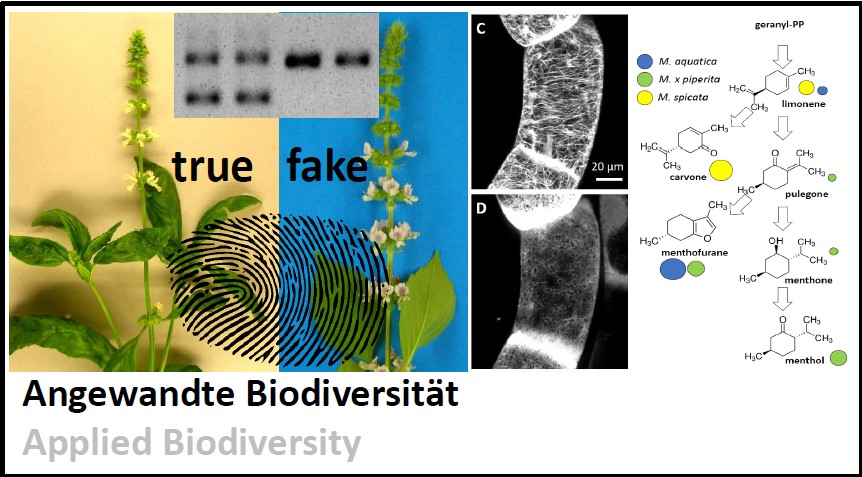 |
Evolution solves problems in a sustainable, highly diverse manner. Can we valorise this diversity? We work to protect and use diversity. We develop methods, to safeguard consumer protections in times of globalisation. more... |  |
Our research network, funded by Interreg Upper Rhine uses resilience factors from the almost extinct European Wild Grapevine to develop KliWi-varieties (for Klima-Widerstandsfähig). more... |
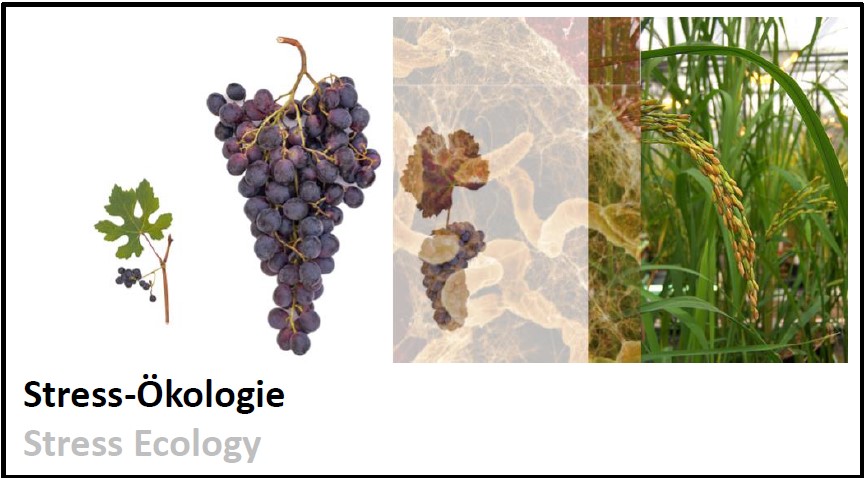 |
Plants are masters of adaptation. How do they overcome stress? We work on jasmonic acid, the plant "adrenalin", but also about the immune system of grapevine. more.. |  |
Ecosystem on chip for sustainable plant protection (Interreg Science Offensive, 2019-2022). more... |
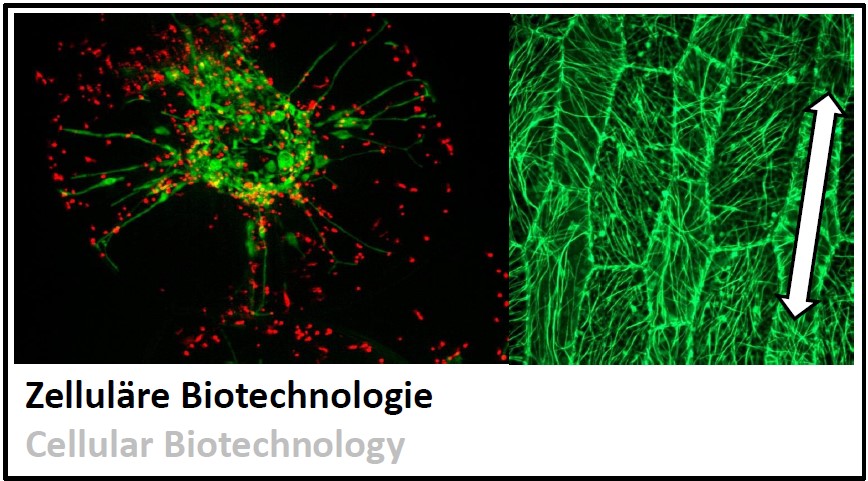 |
Plant cells can self organise without a "Big Brother". Central is the ability of each cell to develop a direction. How does this work? more... |  |
Microtubules, a central element of the plant cytoskeleton, steer plant growth. Can we use this to develop less harmful herbicides?(BAYER, 2018-2024) |






